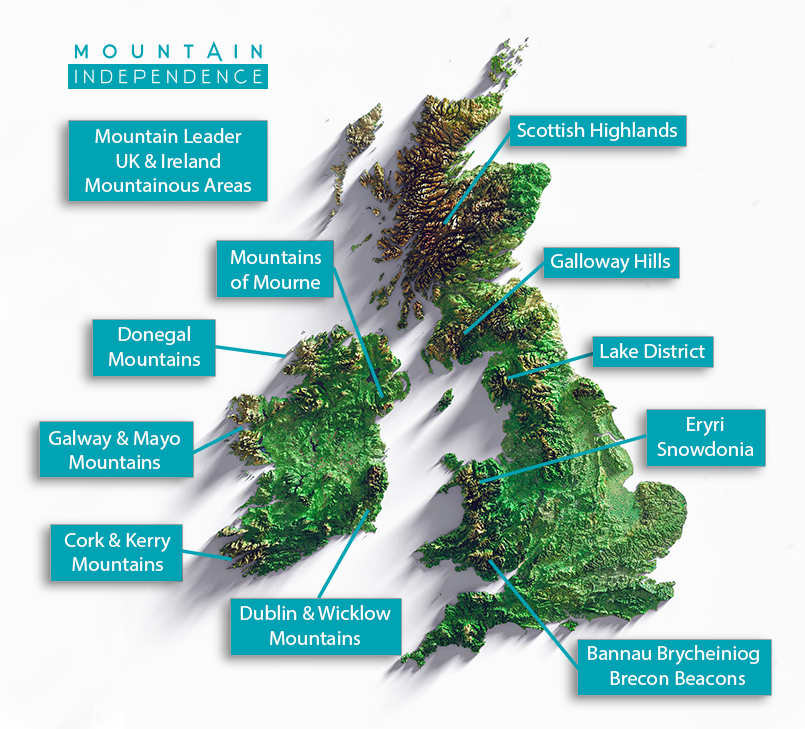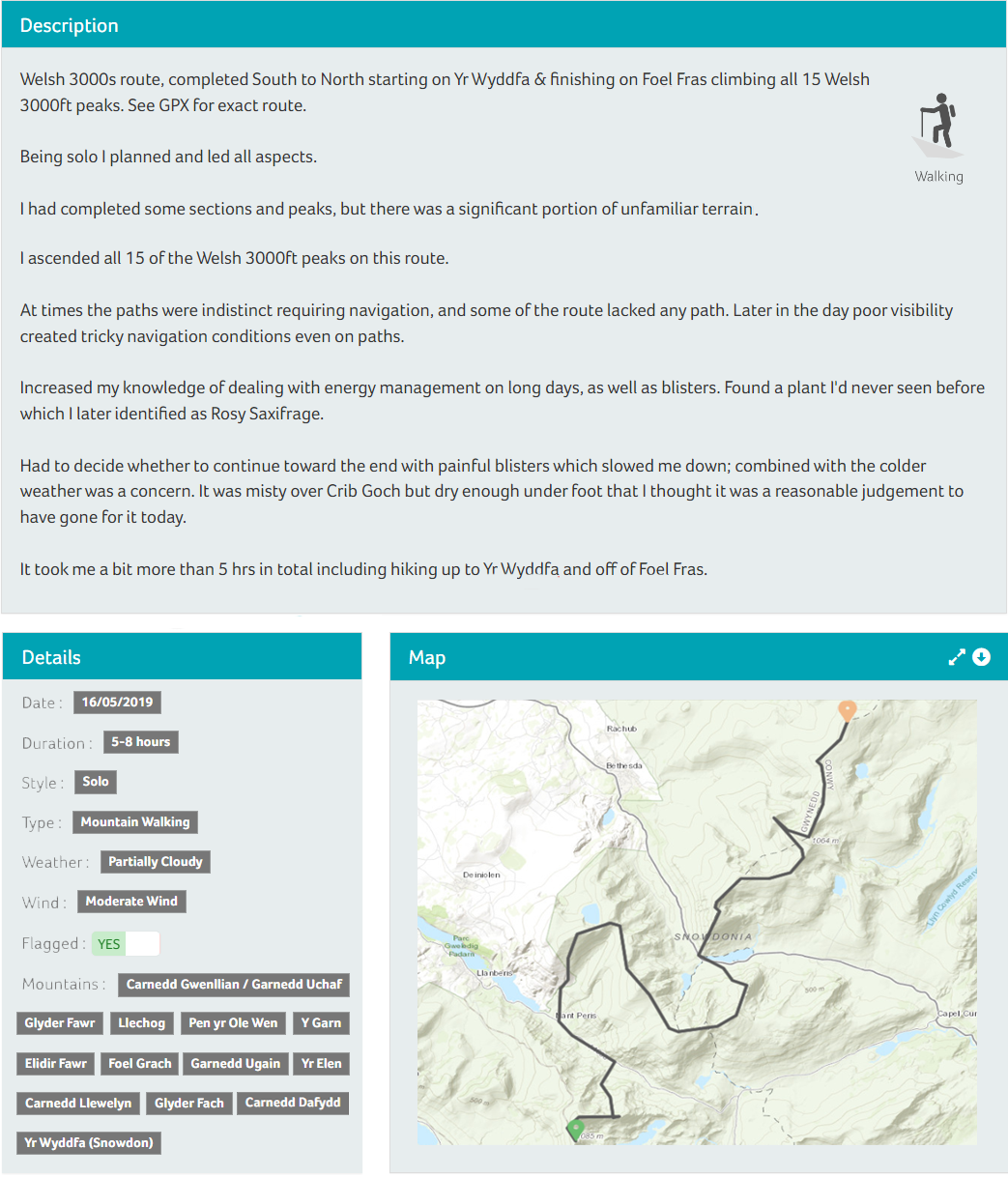Mountain Leader QMDs
One of the great philosophical questions of our time? What makes a Quality Mountain Day? A regular topic on forums sparking furious debate and at times confusion. Perhaps understandable given Mountain Training’s nebulous wording – “Usually some or all of the following criteria would be fulfilled” in the older, now outdated definition.
Thankfully Mountain Training have eschewed obfuscation and tightened up their criteria for a Quality Mountain Day. We’ll delve into the detail of the update from Mountain Training from a provider and assessor’s perspective.
Mountain Training’s New QMD Definition (2024)

Quality Mountain Day
A ‘Quality Mountain Day’ for the Mountain Leader should take place in mountainous terrain in the UK or Ireland.
The quality element lies in such things as the conditions experienced both overhead and underfoot, the exploration of new areas, the terrain covered, the skills deployed and the physical and mental challenge. The experience of a quality day should contribute to knowledge, personal development and associated skill acquisition.
All the following criteria should be fulfilled:
- The individual takes part in the planning and leadership.
- An unfamiliar locality is explored.
- A mountain is ascended.
- Navigation skills are required.
- Knowledge is increased and relevant skills practised.
- Judgement and decision making is required.
- Five hours or more journey time.
These criteria mean that days as a course member under instruction, a member of a group practising skills, or days spent repeating familiar routes are very unlikely to meet the requirements of a quality day.
Mountain Terrain
Foremost is the opening sentence; Mountain Training define Mountainous Terrain as “wild country which may contain unavoidable steep and rocky ground where walkers are dependent upon themselves for immediate help.” In the United Kingdom and Ireland, Mountain Training specifies it includes these areas below;

So in short, areas outside of this list such as Dartmoor, the Peak District, etc. do not count as a QMD for the Mountain Leader scheme. No doubt these areas can be challenging: record them as it demonstrates your wider experience; just not as a QMD.
Overseas Experience
Mountain Training do say that overseas experience can be useful as an indication of breadth of experience, but if used as part of your logged ‘quality days’, should be in similar terrain and conditions to those found in the UK and Ireland, to be truly relevant to the qualification. The majority of your experience however, at least 50% of the minimum requirements, should be here in the UK or Ireland. I’ve had to discount an ascent of Everest from someone’s logged QMDs (they had plenty more QMDs though!) as whilst a great experience, it wasn’t representative of the terrain and conditions found in the UK!
Quality
The second paragraph fleshes out the spirit of a QMD and needs little expanding upon. In my mind each QMD should provide development and build upon your previous QMDs in some way.
Criteria
The sentence “All the following criteria should be fulfilled:” is unequivocal. All of the listed bullet points need to be satisfied. I’ll address each in turn with my thoughts as an assessor;
The individual takes part in the planning and leadership.
Key here is that you play a part, not necessarily lead everything. So any day, where you contribute in a meaningful way to planning and decision making counts. Days such as on your Mountain Leader Training or other courses, marshalled events, or guided trips don’t count, as ultimately the lead instructor takes overall responsibility on these days.
An unfamiliar locality is explored.
Explore! Check out places you haven’t been before. Repeat routes won’t increase your QMD count. You can re-climb your favourite mountain, but take different paths and off-path routes to fulfil this criteria. Be adventurous!
A mountain is ascended.
No making mountains out of molehills! A commonly quoted minimum mountain height is 610m, but I predominantly like to see significant peaks i.e. those classed as Munros. The character and nature of the terrain also plays a role here though; Cnicht for instance is a modest 691m, and yet is remote, with few defined paths and steep rocky terrain making it a mountain in my mind. There are summits in mountainous areas that might fit the Hill & Moorland terrain definition; if so they won’t meet the criteria of a Mountain Leader QMD.
Navigation skills are required.
Popular mountains with well-trodden or clearly defined paths require little navigational skill. Plan less travelled routes, escape the honeypot areas, perhaps avoid paths entirely whilst enjoying your right to roam in access land for parts of your day. Conversely more popular paths may require navigation in extremely poor visibility conditions, just detail in your DLOG entry the conditions encountered to justify these entries.
Knowledge is increased and relevant skills practised.
Every day is a school day; what did you learn? This one is really down to you to define. Include a couple sentences in each DLOG entry detailing skills practiced and how you increased your knowledge! Teaching, navigation, diplomacy skills etc. An environmental snippet perhaps, or some experiential learning from a mistake, or interactions with other groups on the hill.
Judgement and decision making is required.
This could include judgements about the terrain, group or conditions. Again, help your assessor out by defining any judgements or decision making that took place.
Five hours or more journey time.
If you’re fast, slow down a little to take in your surroundings, or cover more ground! Many folks typical QMD could likely be ran quicker than 5 hours; the Welsh 3000s FKT is 4hrs 10 mins! There’s no set formula for minimum distance/height mountain but assessors will expect to see a reasonable length route that correlates with at least a 5 hour or more journey time.
DLOG – An Epilogue….
Ultimately for assessors, we use the information you provide in DLOG when deciding if you’ve met the prerequisite criteria outlined by Mountain Training. We want to pass you, so tell us what we want to hear!
When I’m reviewing logbooks, for each QMD entry, the first thing I’ll check is that it’s in a Mountainous Area of the UK; and then I’ll run through the listed criteria. Help your assessor by clearly explaining how you met each bullet point. A clear example entry looks like this;

There’s no requirement to include a GPX, but if you upload one it saves you having to type out the route you followed in detail and your assessor will see exactly where you’ve walked, including sections off the beaten path which can be difficult to describe in words. DLOG will also auto-populate the mountains you’ve ascended from the GPX saving more time. Even if you haven’t recorded a GPX yourself, you may find resources to download example GPX files that match the route you took.
It can be frustrating as an assessor to trawl through lots of DLOG entries when folk have recorded every, single, last, one of them, as a Quality Mountain Day, even when the criteria clearly isn’t met. You won’t be marked down, but you certainly won’t ingratiate yourself either! Only mark entries that are true QMDs as such.
The “flag” feature is super useful in directing your assessors attention to specific logbook entries; by flagging your 40 best QMDs it directs us to the greatest hits, so we can quickly ascertain you’ve met the assessment prerequisites.
Overseas entries when recorded in your DLOG should evidence all the same details as for a UK & Ireland QMD, but also include extra info to help your assessor understand why the terrain and conditions encountered were similar to the UK & Ireland. We may not be as familiar with overseas mountain areas, so add more detail and perhaps even photos. Is the weather similar in nature to the UK i.e. changeable? Scale of the mountains? Terrain underfoot? Path network? Well worn, easy to follow sign-posted trails on popular trekking routes are unlikely to meet the criteria.
Ultimately the 40 QMD minimum is there for your benefit so you have sufficient personal experience to perform well at assessment. With a minimum amount of experience, you give yourself a minimum chance of passing assessment though, so gain more than the bare minimum! If you have lots of supporting experience in hill and moorland terrain, or experience leading groups in the outdoors, then 40 QMDs may be plenty preparation for assessment. In addition to the QMDs, it is advisable to practice discrete skills like confidence roping, rope work, poor visibility navigation etc that might not be deployed in your consolidation period.
If you have any QMDs that are questionable, check with us and we can advise, or log extra in case any are discounted by your assessor. Ultimately if you don’t attain the minimum 40 QMDs you could receive a technical deferral or even barred from attending your assessment course.
With a minimum amount of experience, you give yourself a minimal chance of passing assessment.